These Fig Preserves with Fennel and Bay are prepared with fresh figs and flavored with fennel seeds and bay leaves. This jam makes a delightful spread for crusty bread and a tasty filling for a rustic tart.
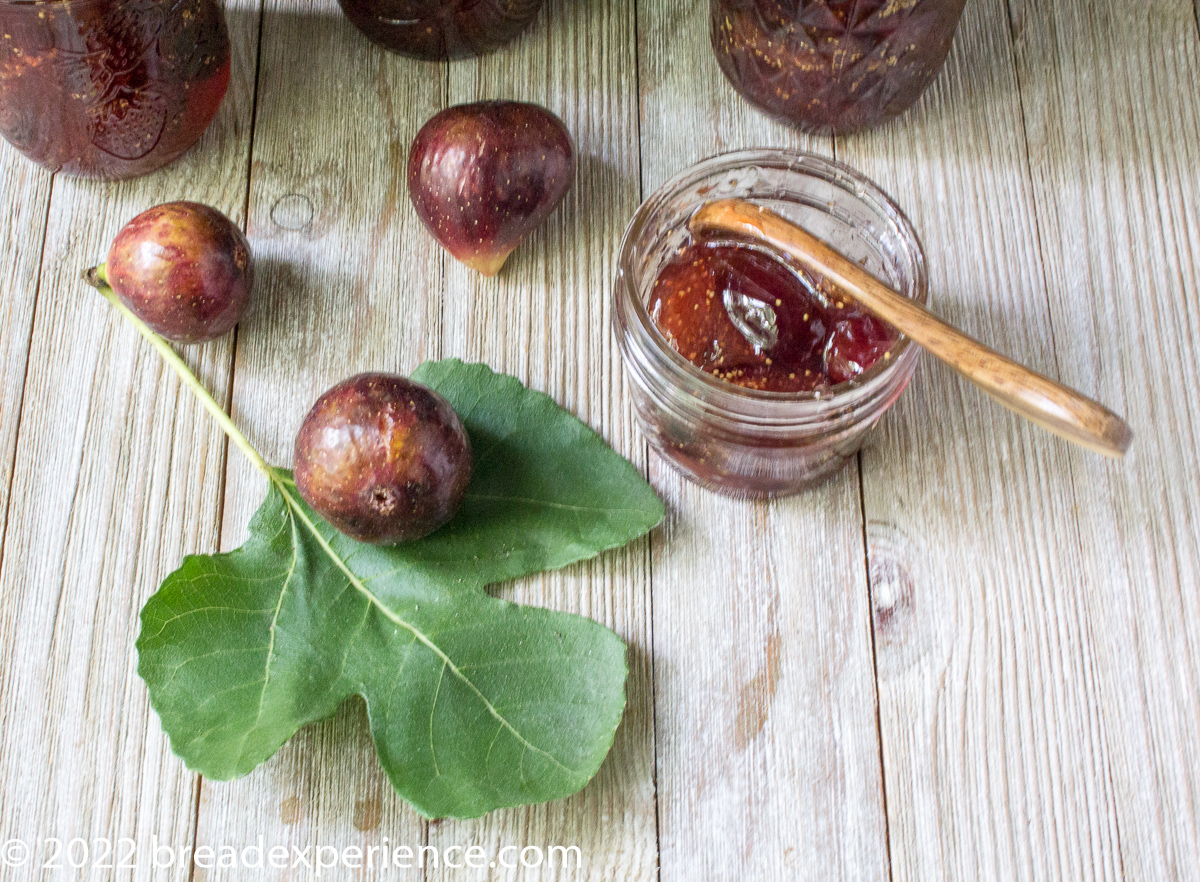
THIS POST MAY CONTAIN AFFILIATE LINKS. FOR MORE INFORMATION, PLEASE VISIT THE PRIVACY POLICY PAGE.
Didn’t know what I was missing, until I tasted homemade
I never really appreciated figs until I started gardening at the local community garden.
The figs I was exposed to growing up came in the form of Fig Newton Bars. I’m a very textured eater, and I just didn’t care for those fig bars because they bothered my sensitive teeth.
Fast forward a decade or two, and I had the opportunity to enjoy a homemade fig bar. A fellow gardener made homemade fig bars using the figs we harvested from our big fig tree at the community garden. Experiencing the flavor and texture of the homemade bar converted me into a fig lover.
I got so excited about figs, that I planted two trees in my yard in 2020. The fig tree in the front yard is growing very nicely and producing big and juicy fruit.
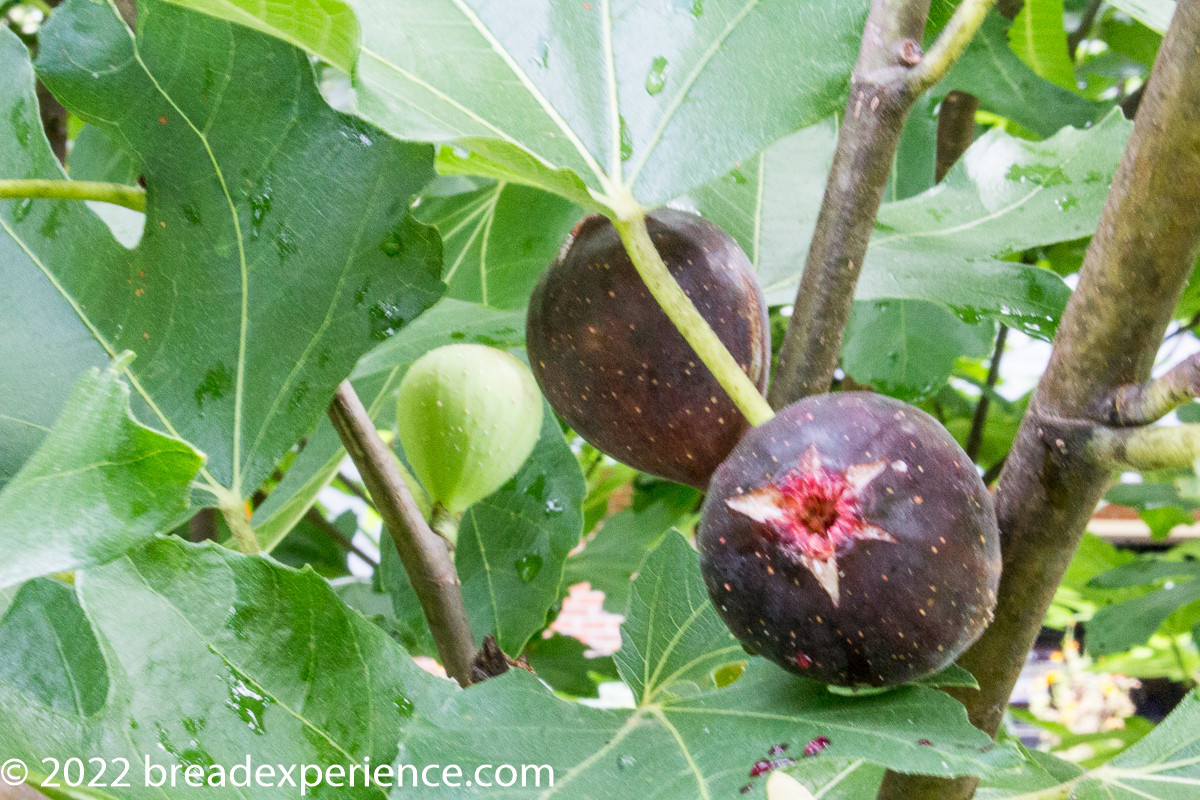
The other fig tree, in my backyard, didn’t seem to like its surroundings so I moved it to the community garden where it has more sunlight and the company of other fig trees. It’s between a brown turkey fig tree and a mission fig tree, and so far, it’s adapting quite nicely to its new environment.
The fig tree in my front yard has been producing so much fruit this year that I’ve been harvesting several pounds per week.
I’m so glad it’s just a dwarf tree because I’m not sure I could keep up with it if it was any bigger. As it is, I’ve been eating, sleeping, and dreaming of figs for the past several weeks. Every morning or evening I visit the tree and smile.
My favorite way to enjoy figs is to eat them freshly picked, but I didn’t want to waste any of the fruit so I’ve been testing all of the various methods you can use to put away the harvest – fresh, frozen, dried, made into jam or preserves, roasted, and baked. This post focuses on making fig preserves.
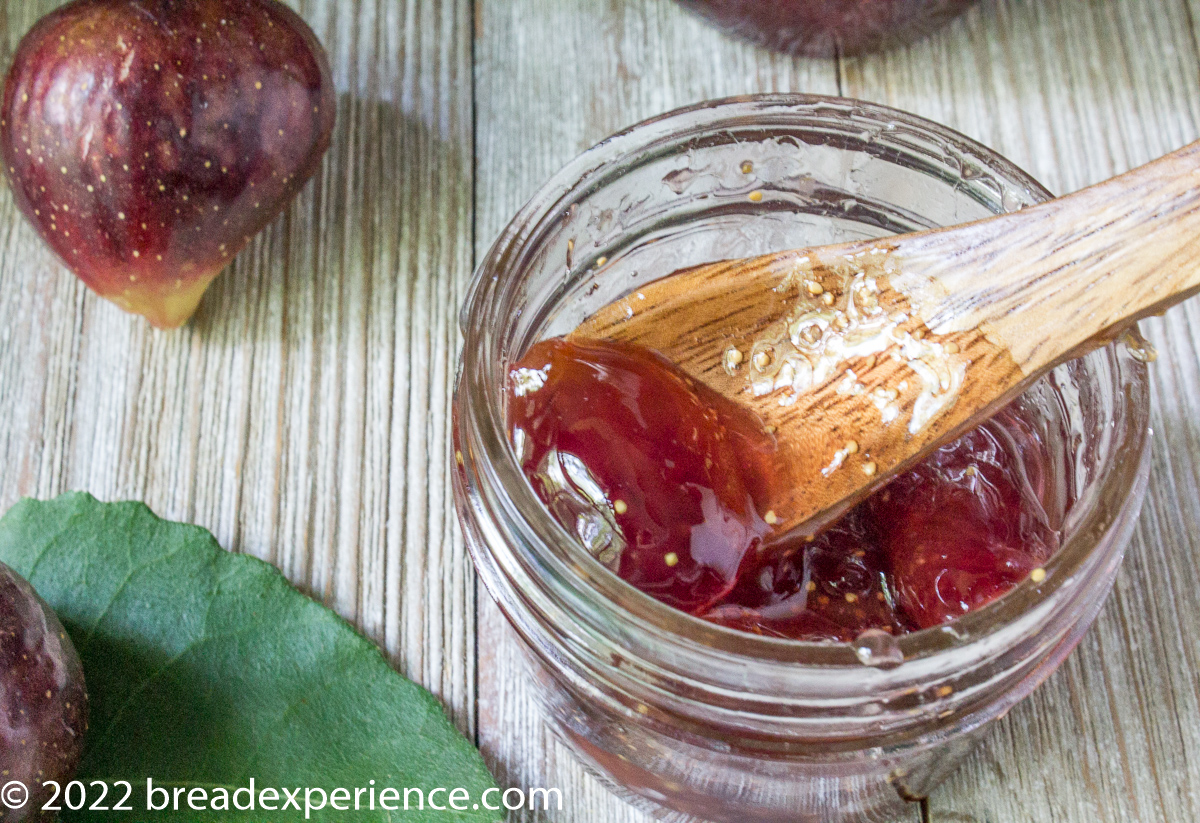
What type of figs should you use in these fig preserves?
These preserves are made with the first crop of fruits from my fig tree.
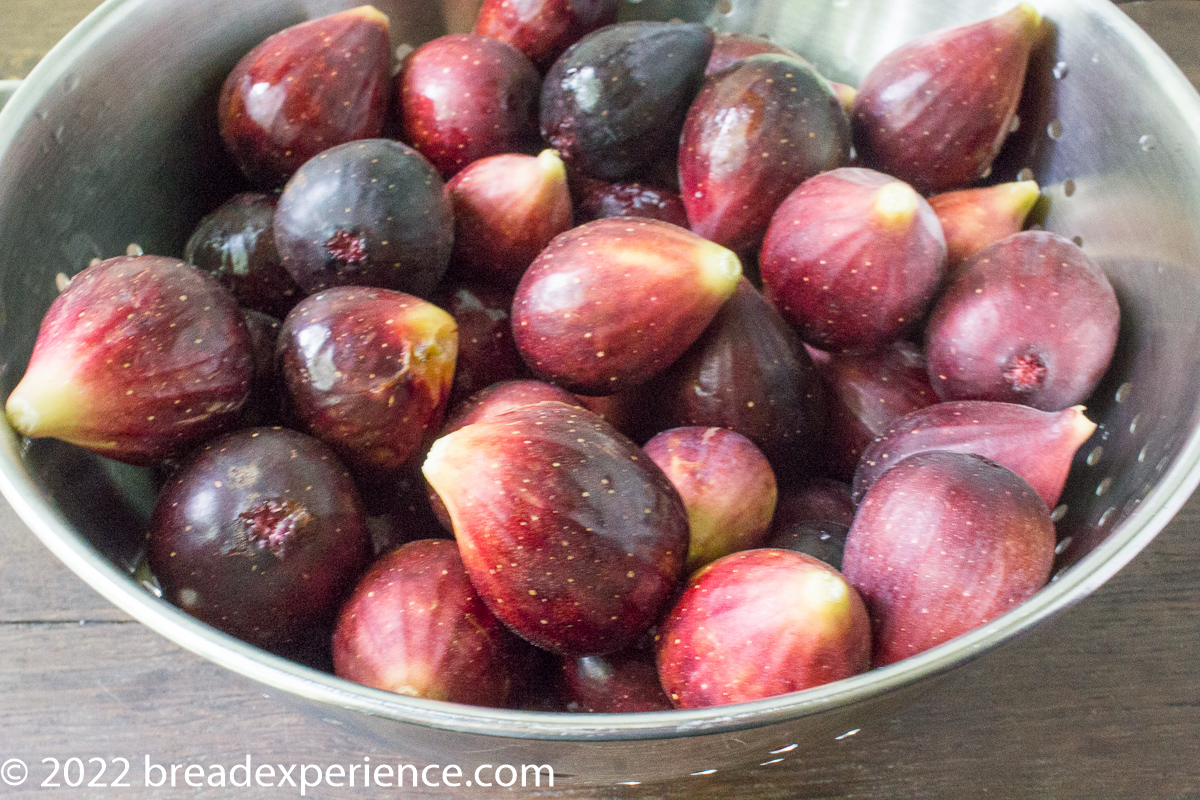
I used Brown Turkey Figs, but you can also use Black Mission Figs or your figs of choice. No need to peel them unless you are using small wild figs.
Brown Turkey Figs have purplish-brown skin and lovely pinkish flesh.
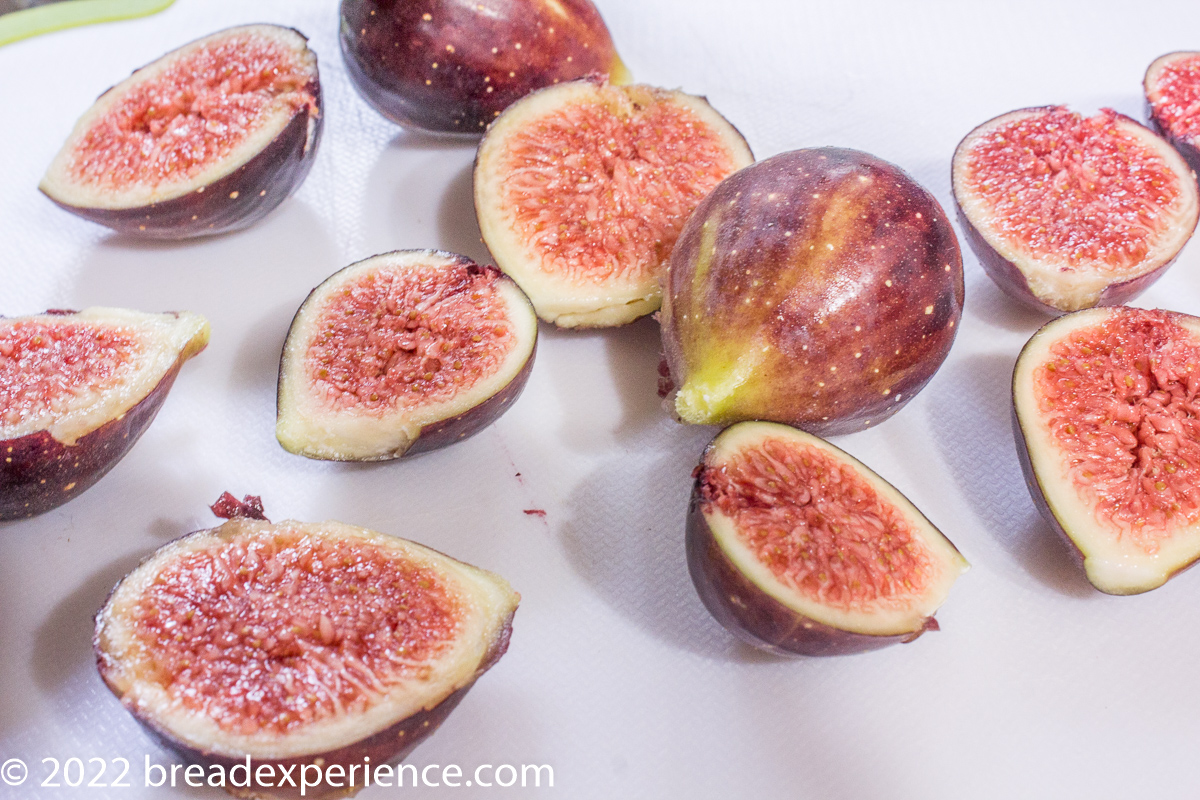
Soak the figs in sugar overnight to soften the fruit
If you have an abundance of figs, this method is a fuss-free way of preserving some of your harvest. Just cut away any remaining stem; chop the fresh figs in half, and let them soak in a sugar mixture for up to twenty-four hours to soften the fruit before processing.
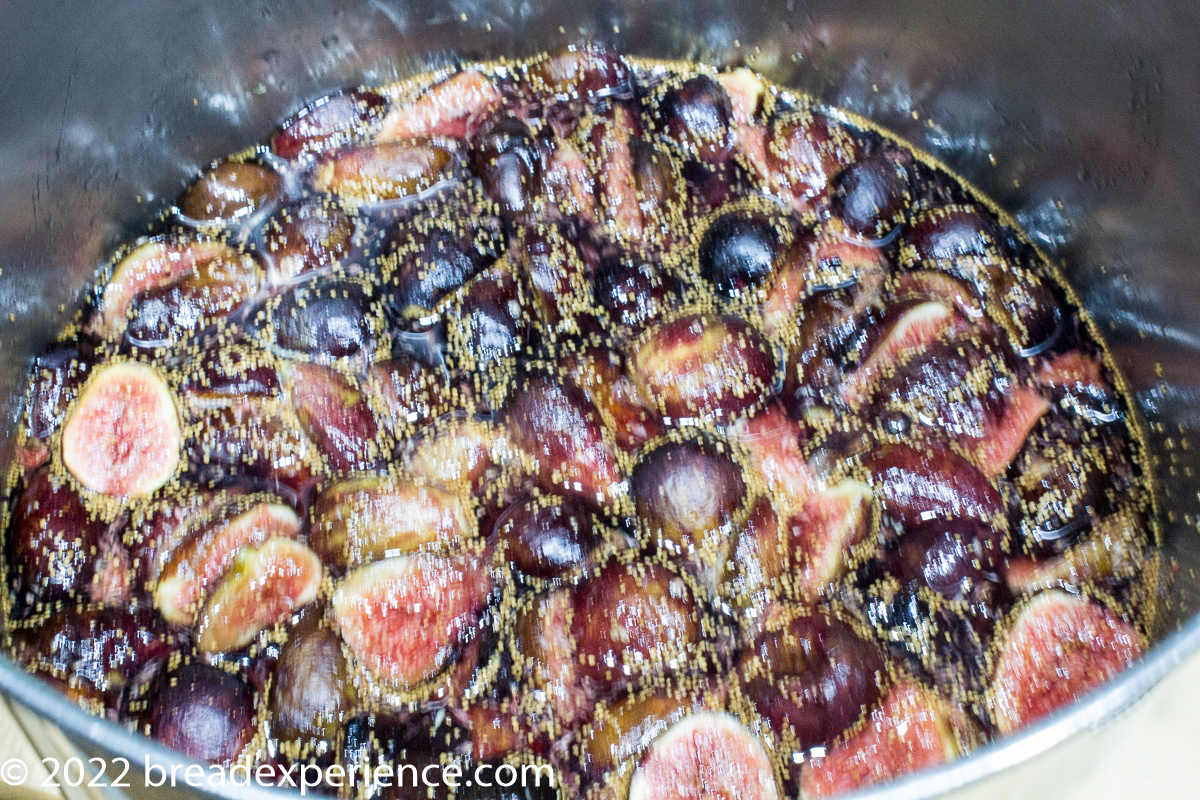
What type of bay leaves should you use?
This jam recipe calls for Mediterranean bay leaves. I used a couple of dried bay leaves because they tend to have a less potent flavor than fresh leaves.
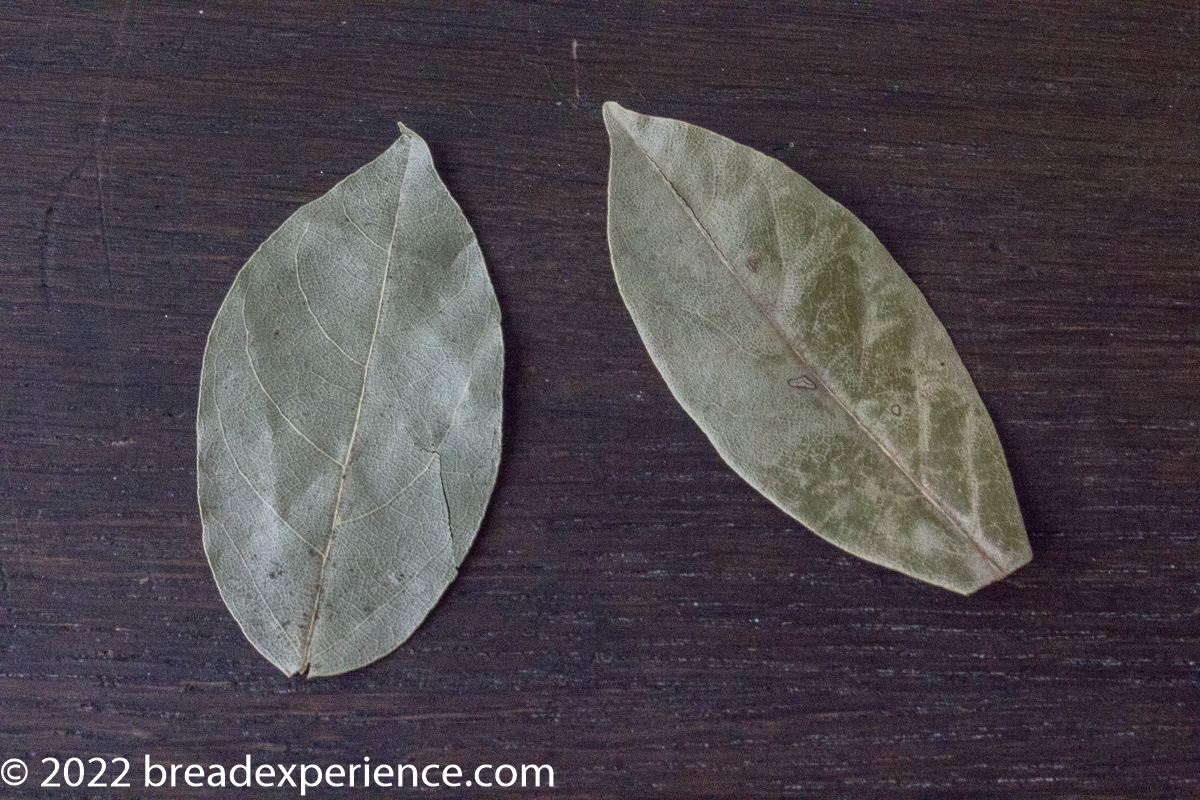
According to the Bay Leaves article on Fine Cooking, “There are two main varieties of bay leaves: California bay leaves, which tend to be longer and thinner with a more potent and slightly minty flavor, and Turkish bay leaves (also called Mediterranean), which have shorter, fatter leaves and a more subtle flavor. Turkish bay leaves, the most commonly used type, are from the bay laurel (Laurus nobilis), an ancient tree originating in Asia Minor (modern Turkey).”
How do the fennel seeds taste in these fig preserves?
In The Vegetarian Flavor Bible by Karen Page, she describes fennel seeds as having a sweet flavor with notes of anise, caraway, cumin, dill, and/or licorice. I’m not a huge fan of caraway, but I love fennel seeds.
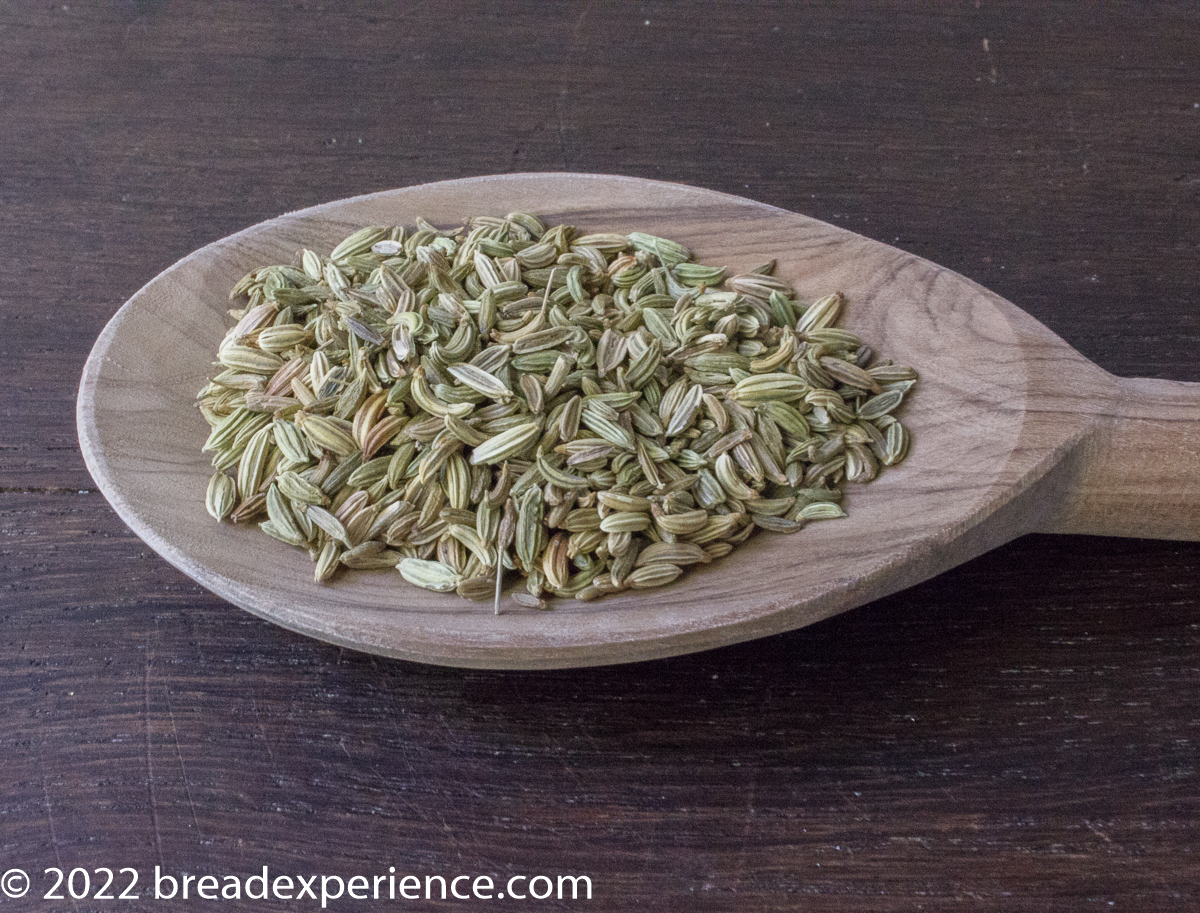
Even so, I wasn’t sure how they would perform in this jam. I needn’t have worried. The uncommon seasonings of bay leaf and fennel seeds, along with the lemon zest and lemon juice, blend nicely to complement the flavor of the ripe figs.
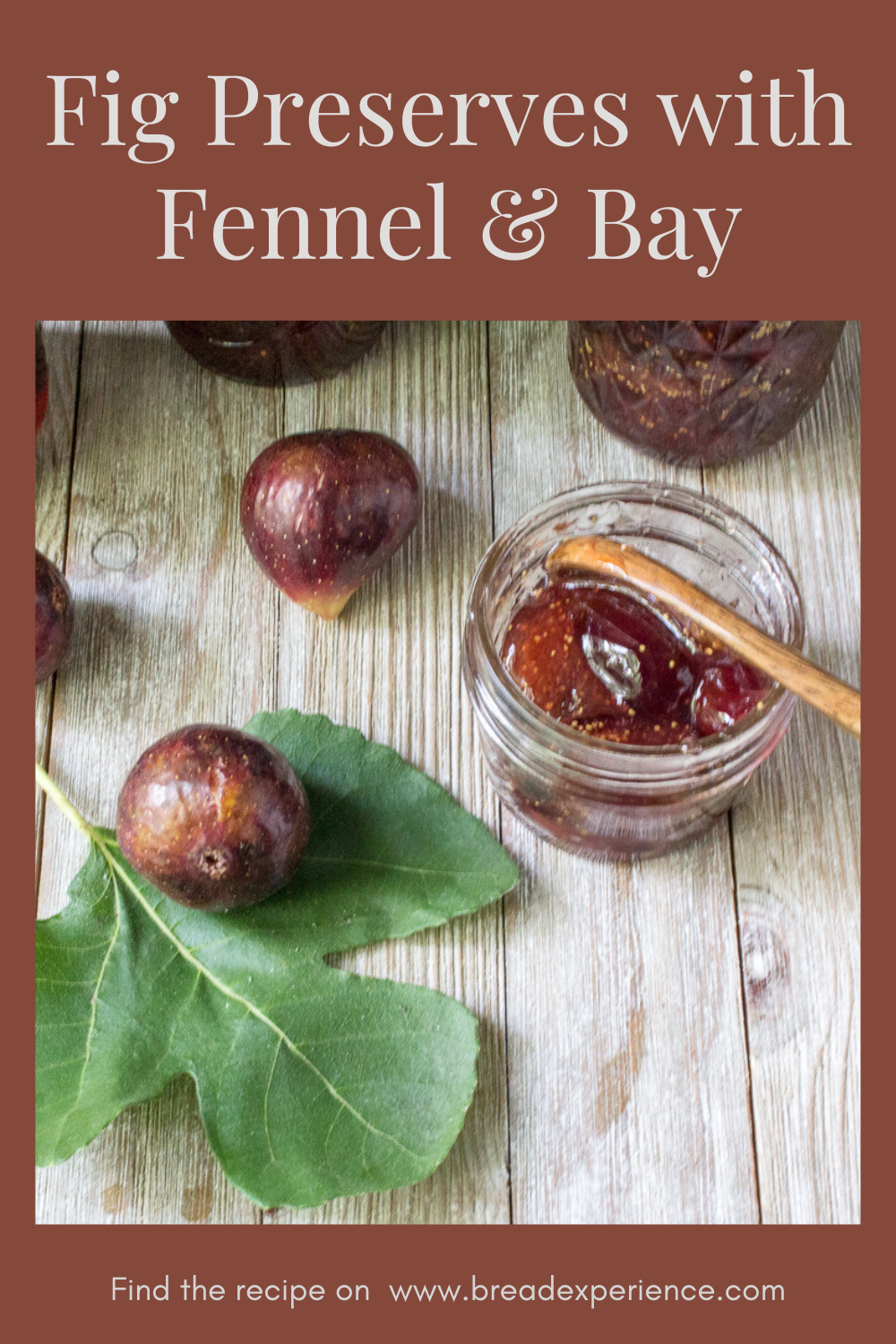
Adapted from Fig Preserves from The Joy of Jams, Jellies, and Other Sweet Preserves by Linda Ziedrich and Fig and Thyme Jam from Canning & Preserving by Ashley English
For detailed instructions on water-bath canning, refer to the instructions at the National Center for Home Preservation.
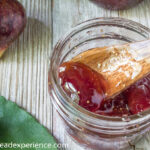
Fig Preserves with Fennel and Bay
- Yield: 3 Pints or 5-6 Half Pints (8 ounce Jars) 1x
Description
These Fig Preserves with Fennel and Bay are prepared with fresh figs and flavored with fennel seeds and bay leaves. This fig jam makes a delightful spread for crusty bread and a tasty filling for a rustic tart.
Ingredients
- 2 1/2 pounds just-ripe figs
- 5 cups granulated sugar
- 2 Mediterranean bay leaves (I used dried leaves)
- 1/4 teaspoon fennel seeds
- Zest of one large lemon
- 3 tablespoons bottled lemon juice
Instructions
- Wash the figs and gently pat them dry. Trim their stems and cut them in half.
- In a large, heavy, stainless-steel saucepan, gently mix the fig halves with the sugar. Let the mixture rest at room temperature for 12 to 24 hours.
- The next day, place a small plate in the freezer (to be used to test for gelling).
- Sterilize 6 half-pint (8 ounce) mason jars, along with the lids and screw rings. Fill a canner with water, and set it over medium-high heat. Let it come boiling.
- Place the lids and rings in a small pan and cover with water. Bring the water to a boil, then turn off the heat, and set the pan aside while you make the preserves.
- Place the preserving pan with the fig/sugar mixture over medium heat. Gently stir in the fennel seeds, lemon zest, lemon juice, and bay leaves. Continue stirring occasionally until the sugar is fully dissolved.
- Raise the heat to medium high and continue cooking the mixture while stirring constantly. Once the preserves have reached the boiling point, let them boil for 5 minutes, until the syrup reaches the thread stage (230 degrees F., if using a thermometer) or test for gelling using the plate method.
- Using the plate method to test gelling: Remove the plate from the freezer and place about a teaspoon of jam on it. Put the plate back in the freezer for about 2 minutes. Remove it from the freezer and gently push the edge of the jam with your finger. If it is properly gelled, the jam should wrinkle a bit. If it is still runny, continue cooking the jam for 5 minutes more and test again using the plate method.
- Remove the pot from the heat and allow the preserves to rest for 5 minutes before ladling into the jars.
- Place the hot jars on a kitchen towel on the counter. Using a canning funnel, ladle the preserves into the half-pint jars, reserving ¼ inch (6 mm) headspace. Using a non-metallic spatula, remove any air bubbles. Tear the bay leaves and divide them between the jars.
- Using a clean damp cloth, wipe the rims of the jars clean. Place the lids and screw bands on and tighten to finger-tight only.
- Using a jar lifter, place the jars in the canner. Process the jars for 10 minutes in a boiling-water bath. (Add 1 minute more for every 1,000 ft. above sea level).
- Remove canner lid. Wait 5 minutes, then using the jar lifter, remove the jars, and let them sit on the kitchen cloth on the counter for 24 hours to cool and ensure they are sealed correctly. You should hear the lids pop if they are sealed properly.
- Place the sealed jars in a cool, dry place for storage for up to a year. If any of the jars do not seal properly, place them in the refrigerator. They will last for a couple of months in the refrigerator.
- Category: Jam
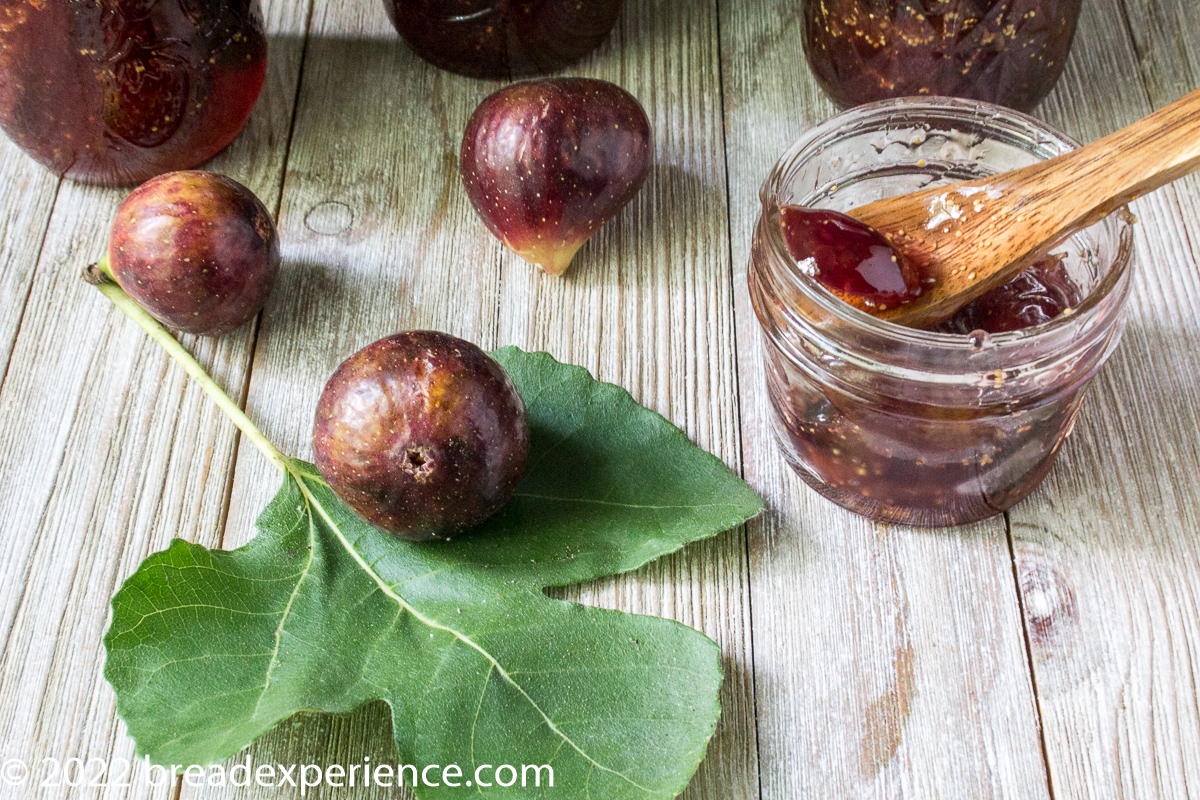
THIS POST MAY CONTAIN AFFILIATE LINKS. FOR MORE INFORMATION, PLEASE VISIT THE PRIVACY POLICY PAGE.
Happy Canning!
Cathy
Leave a Reply